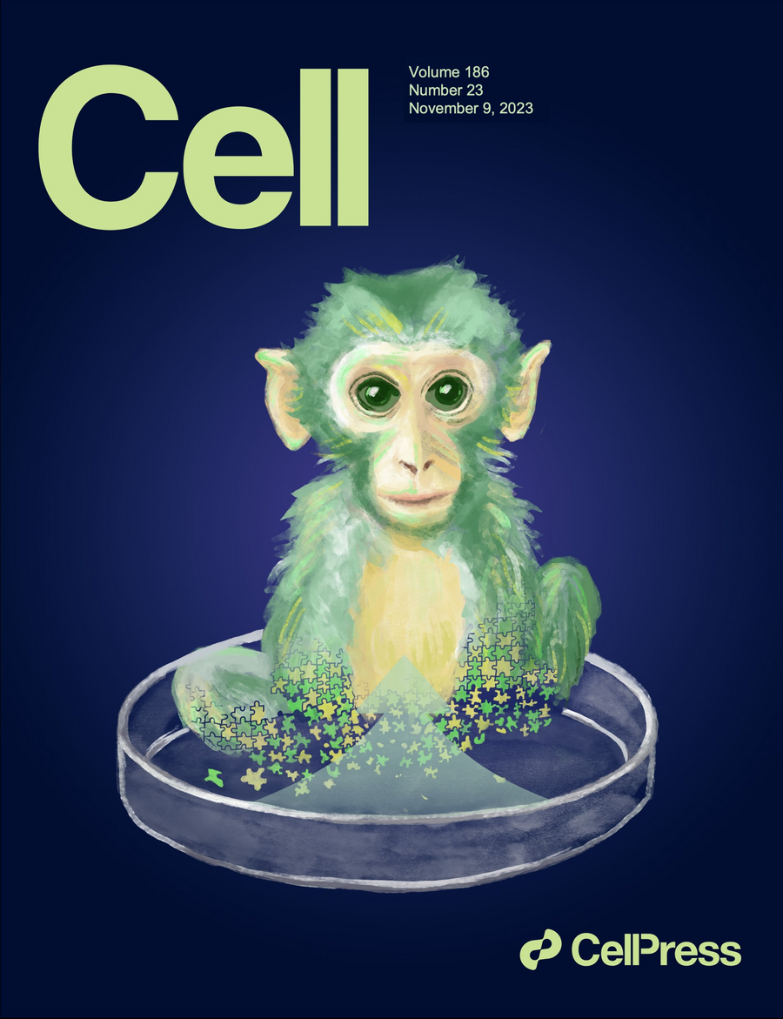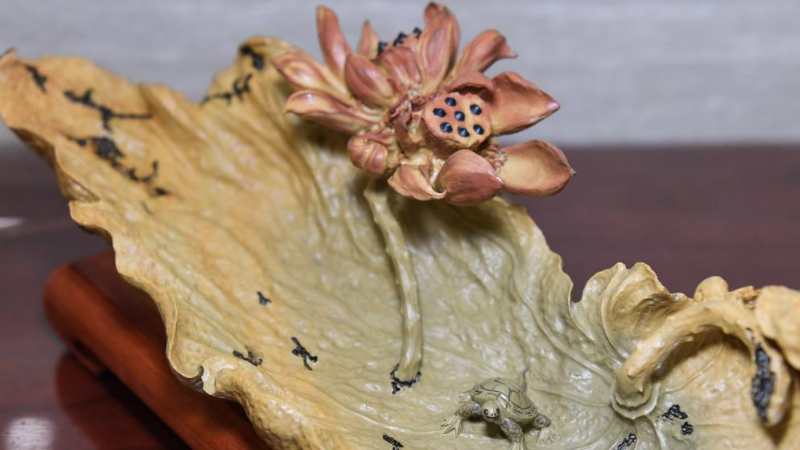
A cartoon illustration of a chimeric monkey has been chosen as the cover of the journal Cell. (Cell/Handout via Xinhua)
SHANGHAI, Nov. 14 (Xinhua) -- A team of Chinese scientists has confirmed the first live birth of a monkey that contains a high proportion of cells derived from a monkey stem cell line, which paves the way for scientists to use chimeric primates to study human diseases.
The experiment demonstrated that the monkey stem cells, a type of cell able to develop into many different cell types, could efficiently contribute to placental tissues outside the embryo and germ cells.
The research team from the Center for Excellence in Brain Science and Intelligence Technology and the Guangzhou Institutes of Biomedicine and Health under the Chinese Academy of Sciences (CAS), bred the chimeric monkeys using crab-eating or long-tailed macaques.
They first established nine stem cell lines using cells removed from seven-day-old blastocyst embryos, and then placed the cell lines in culture to give them enhanced ability to differentiate into different cell types.
The stem cells were labeled with fluorescent protein to enable researchers to determine which tissues had grown out of these stem cells in any animals that developed and survived, according to the study published recently as a cover story in the journal Cell.
Finally, the team selected some stem cells to inject into early monkey embryos that were four to five days old and implanted them into surrogate female macaques, which resulted in four aborted fetuses and six full-term live offspring.
In the live monkeys, the contribution of the stem cells in the different tissue types averaged 67 percent across the 26 different kinds of tissue that were tested.
Also, a live chimeric monkey showed high stem cell contributions reaching up to 90 percent in some tissues, the study revealed.
Such a chimera with cells from two embryos had previously been demonstrated in rats and mice, but had not been realized in other species, including non-human primates, until now.
This new research has practical implications for genetic engineering and species conservation, and may help scientists to generate more precise monkey models for studying neurological diseases, said Liu Zhen, a CAS researcher and the paper's corresponding author. ■












